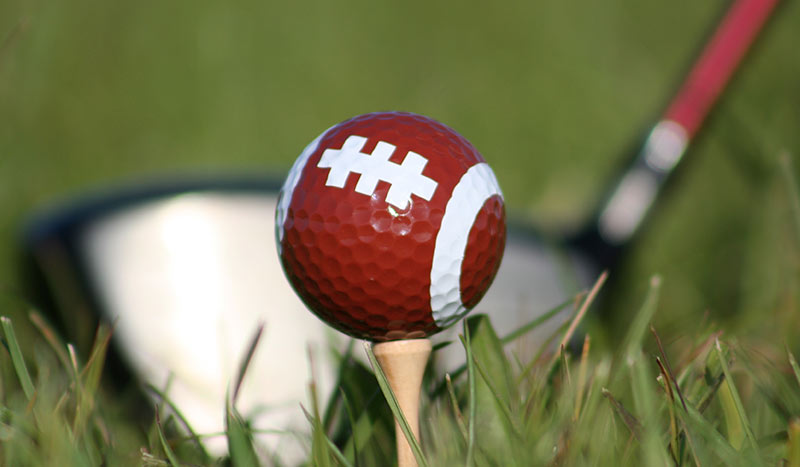
By Dr. Tom Dorsel, Ph.D.
Football provides a good comparison for three kinds of golfers: The grinders, the high-flyers … and then there’s Tiger.
Grinders
Grinders on the golf course are like old style fullbacks, the power running backs in football. They are steady, grind it out, hold onto the ball, 5 yards and a cloud of dust, strategically taking advantage of openings with breakaway speed, but not particularly trying to create these openings with gambling moves. Just conservatively and steadily getting the job done.
Grinders are good under pressure, when you need those final couple yards for the score. They can carry the whole team down the field on their backs. These would be the Jack Nicklauses, Brooks Koepkas and Scottie Schefflers of the world.
When it comes to golf grinders, they keep the ball in play, never fumbling it out of bounds. Their 5 yards and a cloud of dust is steady, middle of fairways and greens. They don’t go flag-hunting, but when they happen to get close to the hole, you can rest assured they are going to knock down the birdie. When the big putt is needed at the end of the match, they are there. And when the scramble team is down to one shot, the grinders are the last player to hit, the ones you can depend on in the clutch.
HIgh-Flyers
Then there are the high flyers in golf, which would translate into the flashy wide receivers or tailbacks of football. They come out fast, let it all hang out, take risks regularly, go for the big play right from the start. And while they can have great moments, even great games, they can also blow routes, fumble the ball or allow interceptions that could have been prevented. These would be the Arnold Palmers, Phil Mickelsons and Jordan Spieths of the world.
Golf high-flyers are going for the big splash on the very first hole. No easing into the round, it is birdie or bust, right off the first tee. If the hole is a dogleg, they are taking it over the trees for a wedge into the green. Often they are spectacular, but they can also crash and burn by blowing routes out of bounds, allowing hazards to intercept their ball, fumbling putts by being too bold en route to 3-putt greens.
Tigers
But what about Tiger? It is not surprising that Tiger is in a class of his own, considering he played the game in a class of his own. I think the Tig was more like a tight end in football, the ideal in my opinion.
Tight ends are steady contributors, be it blocking, serving as decoys, or catching key short passes, often for touchdowns. They are not regularly flashy, but rather more businesslike, as they go about their assignments. Still every once in a while they break loose for a big score. That’s when you find out they also have breakaway speed in that sturdy frame.
Conclusion
I think Tiger, the tight end, represents the best attitude for a competitive golfer: Know how to grind, and also have some flamboyance in your hip pocket when it is called for — but only when it is called for. Otherwise, just do your job, which is to steadily move the ball in a calculated way around the course.
When you have a lead, just look for short gains and hang onto the ball, keeping it in play and you in the game. Keep taking it to your opponents with steady pars, run out the clock on them; and, if needed, be ready to reach back for that big moment, which you also have the ability to produce.
Dr. Tom Dorsel has been a sport psychologist for 50 years, serving part of that time at “Tight-End U.,” the University of Notre Dame, from which he is also a graduate. Dr. Tom is currently based in both Hilton Head and Pinehurst. His best selling book is “GOLF: The Mental Game,” and he can be reached on Facebook or at Dorsel.com.







